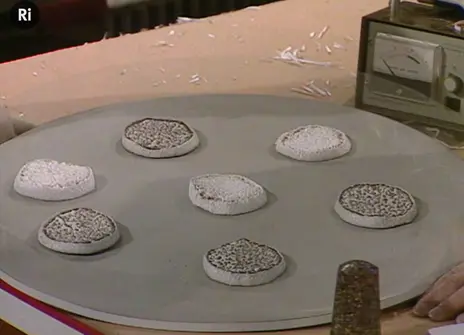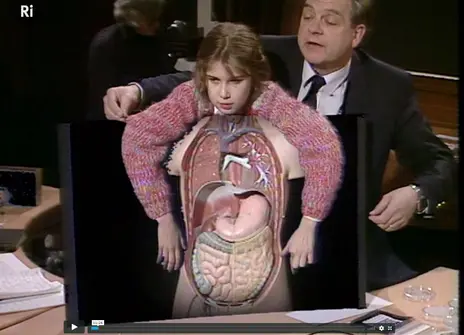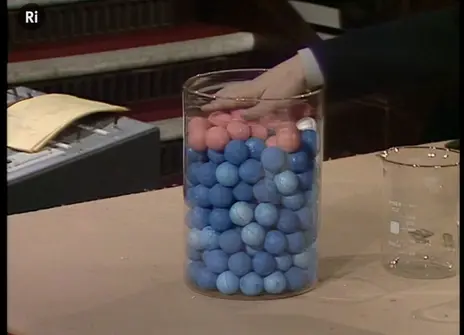Lecture 2 – The spice of life
From the 1984 lecture programme:
Living matter is made from a complex mixture of chemicals, some small like salts, sugars and fats and others large and complicated such as protein and DNA.
Proteins are the main building blocks of living material including, for example, collagen and keratin in skin and hair, and muscle protein. They also do things, like haemoglobin which carries oxygen in the blood, or enzymes that break down the food we eat, and then build it up again to form the molecules of life.
DNA is found in the chromosomes. It is the ultimate chemical of life since that is what genes are made of. The DNA structure is a double helix that explains how cells divide, perhaps the most fundamental property of living things. The four basic building blocks of DNA translate through the genetic code into the 20 letter language of the protein.
Just one small change in the 3 billion letter DNA sequence can cause a drastic disease by giving rise to an abnormal protein that does not work properly. So now we can trace some diseases all the way from the whole person down to the DNA language and the chromosomes.
When we can read that language we are close to reading the secret of life.
About the 1984 CHRISTMAS LECTURES
From the 1984 lecture programme:
We are all different, in looks, in behaviour, and in our susceptibility to disease. Many of these differences are reflected in the chemical makeup of our body and its cells, and most such differences are inherited.
The basic determinants of inheritance, the genes, make up the chromosomes that are found in the nucleus at the centre of every cell. The formal mechanics of inheritance and chromosome behaviour were worked out by Mendel, and later, his successors in the early years of this century. But the chemistry of the genes starts with the DNA double helix of Watson and Crick.
The language of the genes has now been deciphered, so that the small misprint that can cause a major disease, such as the sickle-cell anaemia found mainly in people of African origin, can be read and interpreted.
New developments in genetics have made it possible to study the chemistry of the genes to an extent that could hardly even have been imagined only ten or fifteen years ago. This new genetics, or genetic engineering as it is sometimes called, is beginning to uncover the secrets underlying individual differences, and to provide the tools for understanding and perhaps correcting diseases with a genetic basis.
Now we are beginning to see what it might be that turns a normal cell into a cancer cell, and why the body sometimes attacks itself to produce diseases such as diabetes in children or rheumatoid arthritis.
When will the new genetics tell us why, or whether, one person may become a gifted painter, another a musician, another an athlete and another a mathematician? How far can we go in explaining the infinite variety of mankind?






